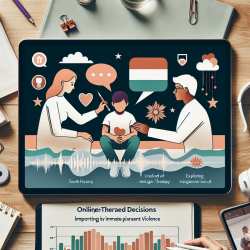Introduction
The transformation of nineteenth-century publishing holds valuable lessons for modern practitioners, especially those in the field of speech-language pathology and education. The article "Popularizers, participation and the transformations of nineteenth-century publishing: From the 1860s to the 1880s" provides insights into how editors, journalists, and authors made science accessible to broader audiences. These historical lessons can inspire today's practitioners to enhance their communication strategies and engage more effectively with diverse audiences.
The Role of Popular Science in the 19th Century
During the 1860s to the 1880s, a surge in 'popular science' periodicals made scientific knowledge more accessible to middle and working-class readers. This era saw a communications revolution characterized by improved printing technologies, higher literacy rates, and reduced costs, leading to a proliferation of affordable science books and periodicals.
Editors and authors of the time viewed their readers as co-participants in knowledge creation, challenging the notion that scientific discovery was confined to laboratories. This participatory approach democratized science, encouraging public engagement and fostering a broader understanding of scientific concepts.
Lessons for Modern Practitioners
Today's practitioners can draw several lessons from this historical perspective:
- Engage Diverse Audiences: Like the popularizers of the 19th century, modern practitioners should strive to make scientific knowledge accessible to diverse audiences. This involves using clear, non-technical language and visual aids to convey complex ideas.
- Encourage Participation: Encourage clients, students, and their families to actively participate in the learning process. This participatory approach can enhance understanding and retention of information.
- Leverage Technology: Utilize modern technology, such as online platforms and teletherapy, to reach wider audiences and provide accessible services, much like the periodicals of the past expanded their reach through new publishing methods.
Implementing Participatory Science in Practice
Practitioners can implement participatory science by fostering an environment where clients and students feel empowered to ask questions and contribute their insights. This can be achieved through:
- Interactive Sessions: Design therapy sessions that encourage interaction and active participation, allowing clients to explore and engage with the material actively.
- Feedback Mechanisms: Establish feedback loops where clients can share their experiences and insights, contributing to the refinement of therapy techniques.
- Community Involvement: Involve families and communities in the therapy process, creating a support network that reinforces learning and development outside of formal sessions.
Conclusion
The lessons from the 19th-century transformation of publishing emphasize the importance of making science accessible and engaging to all. By adopting participatory approaches and leveraging modern technology, practitioners can create inclusive environments that foster better outcomes for children and their families.
To read the original research paper, please follow this link: Popularizers, participation and the transformations of nineteenth-century publishing: From the 1860s to the 1880s.










